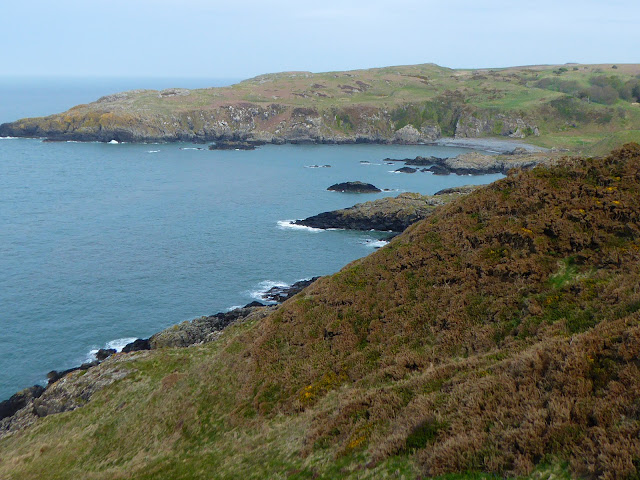In October I'm always seeking out trips that make the most of the autumn colours. The Loch Lomond area is a good destination at this time of year because it's blessed with a lot of deciduous cover that turns gold and yellow come October. So this two day trip walked a section of the West Highland Way, starting at the north end of Loch Lomond.
There was an unusual beginning to the walk though as we got off the train at Ardlui and took the tiny ferry across the loch to Ardliesh on the eastern shore. I had never done this before but my friend had used the ferry 40 years ago. He described having to wade waist deep to get onto to the boat on the far shore as there was no jetty and then being offered whisky by the ferryman! 40 years later we discovered there is now a jetty but no whisky on offer.
Once off the boat, we started walking north. The colours were just turning and the golds, russets and yellows were complimented by the reds of rowan and hawthorn. The high tops were in whispy cloud but as we looked back across the water, the glen above Ardlui was a cascade of autumn trees that tumbled down to the loch shore. A slight rise in the route then afforded a gorgeous view down Loch Lomond and its wooded shores.
The walk onward was beautiful with a richness in the nature that slowed our pace as we took it all in. There were a myriad of mushrooms along the route and knarly old trees that framed distant views to the hills. We marvelled at autumn oak leaves dotted with galls and stopped to watch the roaring waters at the Falls of Falloch.
As we pulled out of Glen Falloch towards Crianlarich, it was already early evening and the dipping sun cast golden rays over the glen. Our path climbed gently and as the light was fading we found a spot for the tents at the Crianlarich Crossroads. This may sound like a busy city interchange but it's actually the name for the junction in the West Highland Way path with the linking path to Crianlarich. I imagine in summer it's a popular section of path but it was already late in the year and late in the day so we were happy about pitching the tents here. We even had the luxury of a bench where we cooked supper after dark.
We set out next morning into the mist of a temperate inversion. This was really lucky because it treated us to two beautiful natural phenomena. First of all, the trees and bushes everywhere were absolutely covered with cobwebs. They were picked out by mist droplets that sparkled as the sun started to break through. In one gorge in particular, the trees were all dotted with dense cobwebs as if somebody had decorated them for Halloween. I had never seen anything like it.
Then as the sun got stronger a fog bow appeared ahead of us. Much like a rainbow, it's created by sunlight interacting with water droplets but in mist or fog the water droplets are so small that diffraction is dominant, scattering the light and smearing the colours.
The sun eventually broke fully through, leaving only shreds of mist hanging below the mountain tops. The path contoured round the hillside through plantation forestry before dropping into Strath Fillan where birch trees and farmland took over for the final couple of miles into Tyndrum.
Fact File





















































